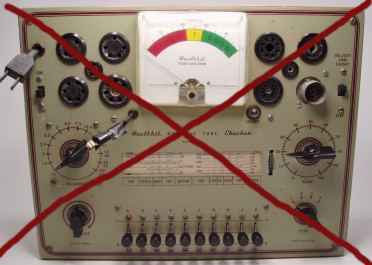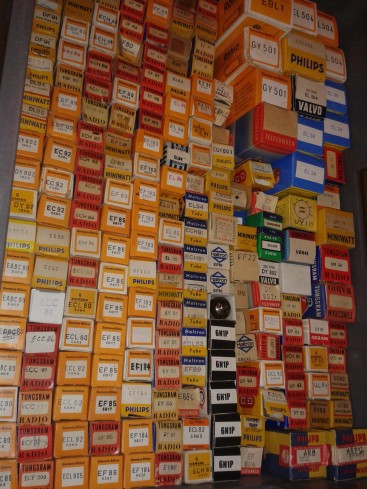The µTracer tube tester kit. Part 1: intro & unwrapping
March 03, 2017
on
on
 Like many of you with a positive slant towards vacuum tubes, and in possession of a few hundred of these “glow FETs” often from Messrs. Various & Dubious :-), and some unlabeled too, I’ve always wanted to own a full-blown tube tester. Sure, I do own a tube checker, but that apparatus — mine is Heathkit TC-2P — typically does no more than a simple cathode emission test on tubes, and a few checks on leaking or shorted grids. And as I wrote in the relevant Retronics article a long time ago, the TC-2P provides no more than a quick GO/NO-GO verdict on a suspect tube to the TV and radio repairman having to work quickly on a defective set and with the trash bin within easy pitching range.
Like many of you with a positive slant towards vacuum tubes, and in possession of a few hundred of these “glow FETs” often from Messrs. Various & Dubious :-), and some unlabeled too, I’ve always wanted to own a full-blown tube tester. Sure, I do own a tube checker, but that apparatus — mine is Heathkit TC-2P — typically does no more than a simple cathode emission test on tubes, and a few checks on leaking or shorted grids. And as I wrote in the relevant Retronics article a long time ago, the TC-2P provides no more than a quick GO/NO-GO verdict on a suspect tube to the TV and radio repairman having to work quickly on a defective set and with the trash bin within easy pitching range.Like many of you I have been hunting for ages for a real tube tester like the high-end ones from Neuberg, AVO, Funke or Hickok. No cigar! Those things are unobtainable and will forever (and perhaps rightly so) remain in the hands of collectioneurs and saveurs. These instruments are huge, bulky and impressive to look at with their dozen or so controls and analog meters, and a thick book to look up tube settings. Just check out eBay & Co. and you may understand why the cost and rarity of these instruments made me decide to abandon the search, and start looking for a state of the art equivalent. Yes a Tektronix 570 is “great” but literally it’s a great big thing!
 Sometimes we should stop dreaming and begin wanting.This is what I want:
Sometimes we should stop dreaming and begin wanting.This is what I want:
- the ability to trace mutual conductance (“gain”) and plotting it as a set of curves just as they appear in the datasheets;
- safe operation in spite of high voltages present;
- compatibility with the most commonly seen tube sockets (7-pin noval, octal, 9-pin noval, etc.)
- the ability to match tubes in terms of gain;
- the ability to perform microphony tests;
- the ability to determine the type code of an unlabeled tube without blowing it;
- To get rid of all my tubes that fail the manufacturer’s specification in any way.
And this is what I do not want:
- the tester telling me “go” or “no-go”. I will be the judge of that by reading graphs only;
- a bulky, old fashioned user interface with massive switches, knobs and dials;
- any hassle with a microcontroller;
- a custom mains transformer with half a dozen secondary voltages;
- any anxiety over tester-to-PC electrical isolation;
- advice from audiophools on the “sound” of a tube based on pure emotion rather than inter-grid and stray capacitance.
Read full article
Hide full article


Discussion (2 comments)